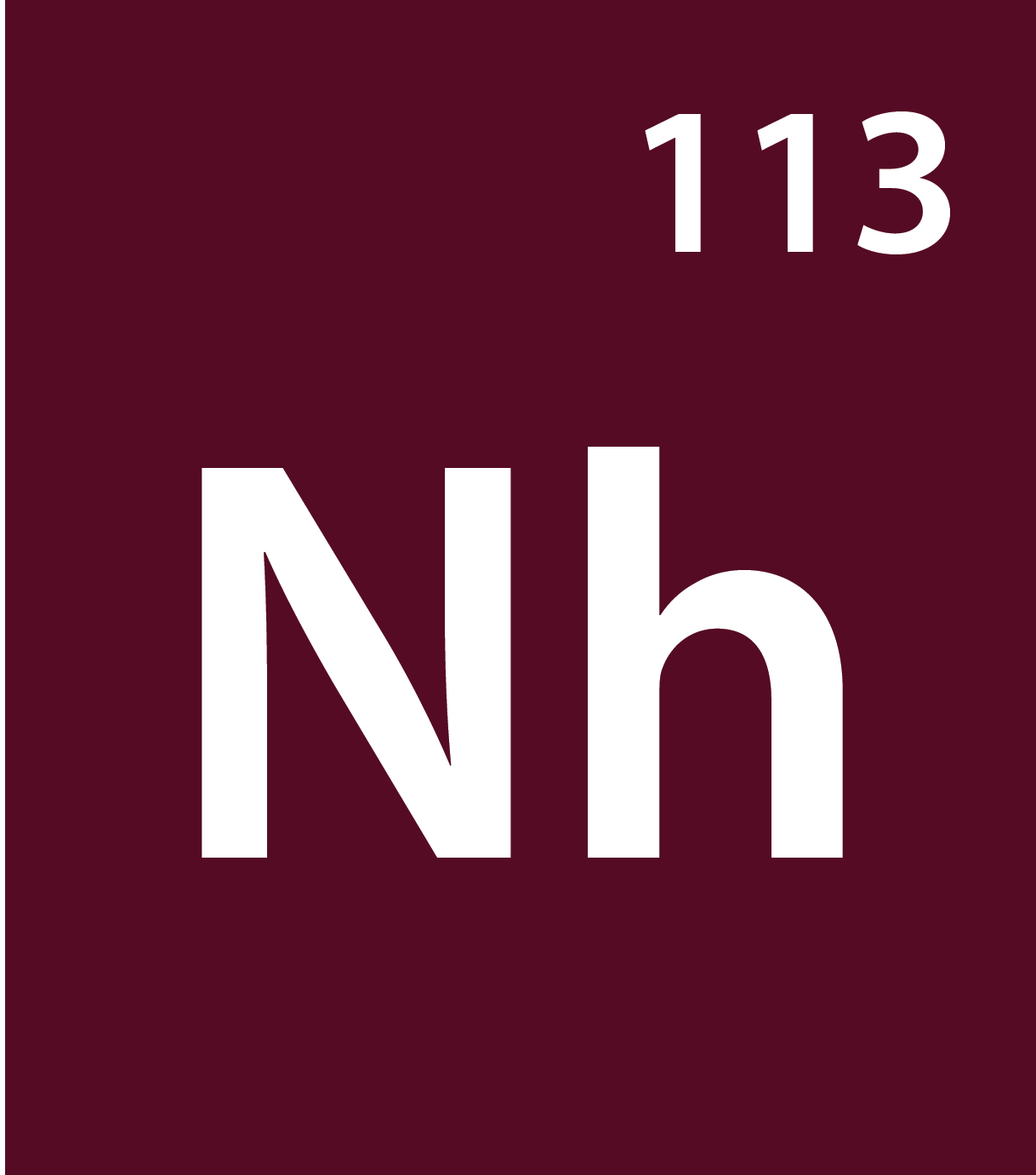Nihonium (Nh)
Isotopes of Nihonium
| Isotope | Atomic Mass | Half-life | Mode of Decay |
| Nh-283 | 283 | 0.147 seconds | α to Rg-279 |
| Nh-284 | 284 | 0.376-1.196 seconds | α to Rg-280 |

Nihonium is the name of a chemical element with the atomic number 113. It is an extremely radioactive synthetic element (an element that can be created in a laboratory but is not found in nature); the most stable known isotope, Nihonium-286, has a half-life of 20 seconds. Nihon is one of the two ways to say “Japan” in Japanese, and its literal meaning is “the Land of Rising Sun.” The name was proposed to make a direct connection to the nation where the element was discovered - nihonium is the first element to have been discovered in an Asian country. Nihonium is produced via the α-decay of element 115 (now called moscovium), and it was first created in 2003 by the Joint Institute for Nuclear Research in Dubna, Russian Federation.
Properties of Nihonium
| Name | Nihonium |
| Symbol | Nh |
| Atomic number | 113 |
| Atomic weight | [284] |
| Standard state | Presumably a solid at 298 °K |
| CAS Registry ID | 54084-70-7 |
| Group in periodic table | 13 |
| Group name | None |
| Period in periodic table | 7 |
| Block in periodic table | p-block |
| Color | Unknown, but probably metallic and silvery white or grey in appearance |
| Classification | Metallic |
| Melting point | 430 °C (predicted) |
| Boiling point | 1130 °C (predicted) |
| Density of solid | 16.00 g/cm3 (predicted) |
| Electron configuration | [Rn]5f146d107s27p1 |
| Heat of vaporization | 130 (predicted) kJ·mol-1 |
| Heat of fusion |
7.61 (extrapolated) kJ·mol-1 |
| Oxidation states |
+1, +2, +3, +5 (predicted) |



